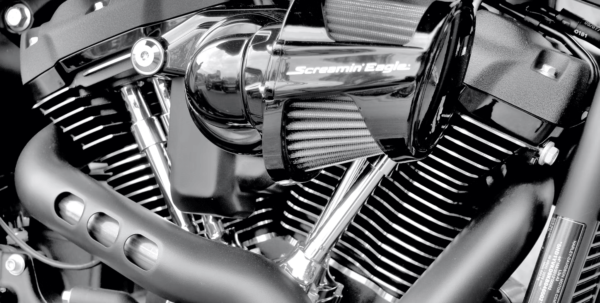It doesn’t matter what vehicle you’re riding; you will undoubtedly face overheating as a common issue, and that’s why coolant. Now the question arises, is motorcycle coolant the same as car coolant?
Motorcycle coolants aren’t the same as car coolant because mostly all car coolant contains silicates that corrode the motorbike engine parts made from aluminum and magnesium. If you want to use car coolant in your motorbike, it’s better to check the ingredients list of coolant.
Let’s look at what you mean and what you can do about it.
While writing this post, I leave no stone unturned so you can learn about some similarities and differences between car coolants.
Before going further, let’s briefly understand what coolant for motorcycles is?
Table of Contents
What is Coolant for Motorcycles?
We all know overheating is a serious concern for any motorcycle, and that’s why riders use motorcycle coolants. Now the question is, what is motorcycle coolant?
Before understanding the motorcycle coolant, you must understand how a motorbike causes overheating.
When riding for a long time, the piston in the engine causes friction which produces heating.
And to tackle this problem, riders use motorcycle coolants; now, let’s see how motorcycle coolants are the same as car coolants.
Is Motorcycle Coolant the Same as Car Coolant?
So far, you understand what coolant is for motorcycles; now the question arises, is motorcycle coolant the same as car coolant?
The answer is no. Motorcycle coolant and car coolant are not the same because car coolant may contain ingredients that can cause issues in a motorcycle engine.
For instance, car coolant often contains silicates that can corrode the magnesium and aluminum parts found in motorcycle engines. It is essential to avoid using car coolant in motorcycles without checking the ingredients first.
Some Ingredients Which You Should Check While Choosing Coolant?
When considering using car coolant for your motorcycle, there are specific ingredients you should check for. The two most important ingredients to look for in coolants are ethylene glycol and silicates. Ethylene glycol is responsible for cooling the motorcycle engine, and without it, the coolant would be ineffective. Silicates, on the other hand, can cause corrosion in motorcycle engine parts made of aluminum and magnesium.
However, it is generally recommended to stick to a coolant specifically designed for motorcycles. While some car coolants may meet the requirements, it is best to choose a coolant that is formulated for motorcycles to ensure optimal performance and avoid potential engine damage. This can ultimately save you money on maintenance and repairs.
How to Choose the Best Coolant for Your Motorbike?
When selecting the best coolant for your motorcycle, prioritize coolant that contains ethylene glycol or, even better, propylene glycol. Both of these ingredients are effective in cooling the engine and preventing overheating. Propylene glycol has the added advantage of being non-toxic, making it safer for use, especially if you have children or pets.
It is crucial to note that coolants with ethylene glycol and propylene glycol have different colors, and it is advisable not to mix different types of coolants together. It is recommended to choose and use a single type of coolant for your motorcycle to ensure compatibility and optimum performance.
Can You Mix Motorcycle Coolant With Car Coolant?
So far, you understand some ingredients which you should check before using the car coolant in your motorbike. Now the question arises, can you mix motorcycle coolant with car coolant?
According to industry experts, both coolants have different ingredients making it unsafe to mix them. Using mixed coolants in your motorbike can also make the motorbike engine malfunction.
Even if you’re changing your motorbike coolant with another brand, you should ensure your motorbike doesn’t contain traces of old coolant as mixing them together may cause technical problems.
And that’s why experts always recommend sticking one type of motorbike coolant for a lifetime and never mixing two types of coolants together.
What’s the Need for Motorcycle Coolant?
So far, you understand that motorbikes produce heating when riding for a long time. Now the question arises, what’s the need for motorcycle coolant?
When riding for a long time, the piston made from iron produces heat because of friction between the cylinder and the piston.
And metal has expansion properties causing the metal to expand when overheated. So in this sense, the piston became expanded, causing more friction which ultimately malfunctioned the engine.
That’s why motorbike experts all around the globe recommend using coolants to protect your motorbike engine from malfunctioning.
How Does Motorcycle Coolant Work?
So far you understand what the need for motorcycle coolant is? Now the real question is, how does motorcycle coolant work?
Motorcycle coolant is made from the heat-absorbing molecular formula, specially made to absorb heat when flowing from the engine.
When flowing from the engine, the coolant absorbs almost all energy. It carries it to the radiator, which dissipates the motorbike heat into the atmosphere.
And this is how a motorbike coolant protects your precious engine from malfunctioning and overheating.
Can You Use Water in Place of Motorbike Coolant?
So far, you understand what motorbike coolant is; now the question is can you use water instead of motorbike coolant?
According to industry experts, using water as a motorbike coolant is an injustice that you can do with your motorbike.
When overheard, your motorbike can reach over 230 F temperature making water in your engine converts into steam.
And steam has expansion properties that can puncture inner pipes in your motorbike engine.
That’s why experts always recommend never using water in the place of motorbike coolant.
What to Do When Motorcycle Engines Overheat?
I’ve discussed some reasons why motorcycle engines overheat, but it’s essential to know how to detect and respond to engine overheating.
While newer motorcycles often have heat indicators to alert you of potential issues, it is not advisable to rely solely on these indicators. It is important to pay attention to other signs of engine overheating.
The most significant indication of a motorcycle engine overheating is the presence of a burning sound and excessive smoke coming from the exhaust. Additionally, you may feel an intense heat sensation on your feet while riding.
If you notice any of these signs or suspect that your motorcycle engine is overheating, it is crucial to take immediate action. Safely pull over to the side of the road and turn off the engine. Allow the motorcycle to cool down for at least 15 minutes before attempting to restart it or continuing your ride.
During this cooling-off period, it is recommended to check the coolant level in your motorcycle and ensure it is at the appropriate level. If the coolant level is low, you may need to add more coolant after the engine has cooled down.
It is important not to continue riding with an overheating engine as it can lead to severe damage and potentially cause a breakdown. If the problem persists or occurs frequently, it is advisable to have your motorcycle inspected by a qualified mechanic to identify and address the underlying cause of the overheating issue.
Remember, promptly addressing engine overheating can help prevent further damage and ensure the longevity of your motorcycle.
Also, read my previous post where I discussed how hot the motorbike can be, CLICK HERE to read.
Frequently Asked Questions:
Is motorcycle coolant same as the car coolant?
Motorcycle coolant isn’t the same as car coolant because some ingredients present in car coolant can make your motorbike engine malfunction.
What’re some compositions which you should check before choosing the motorbike coolant?
Ethylene glycol and silicates are the most important compositions you should check when choosing coolants. Ethylene glycol cools your motorbike engine, and without Glycol, the coolant would be useless.
How to choose the best coolant for your motorbike?
The first ingredient you should see in the coolant is ethylene glycol; it’s responsible for making your motorbike engine cool and avoiding overheating.
Can you mix motorbike coolant with the car coolant?
According to industry experts, both coolants have different compositions making it unsafe to mix them. Using mixed coolants in your motorbike can also make the motorbike engine malfunction.
What’s the need of motorbike coolant?
For protecting your motorbike engine piston from overheating and expanding because of overheating, experts recommend riders to use motorbike coolants.
Final Verdict:
Is motorcycle coolant the same as car coolant? Motorcycle coolants aren’t the same as car coolant because mostly all car coolant contains silicates that corrode the motorbike engine parts made from aluminum and magnesium.
If you want to use car coolant in your motorbike, it’s better to check the ingredients list of coolant. I’ve also mentioned some ingredients you should check before choosing and using the car coolant for your motorbike.
John, this side! My passion for motorbikes started when I was 12. I experienced many accidents and even lost some friends too. And it inspired me to create this website so that no parents in this world would lose their child while enjoying riding.


